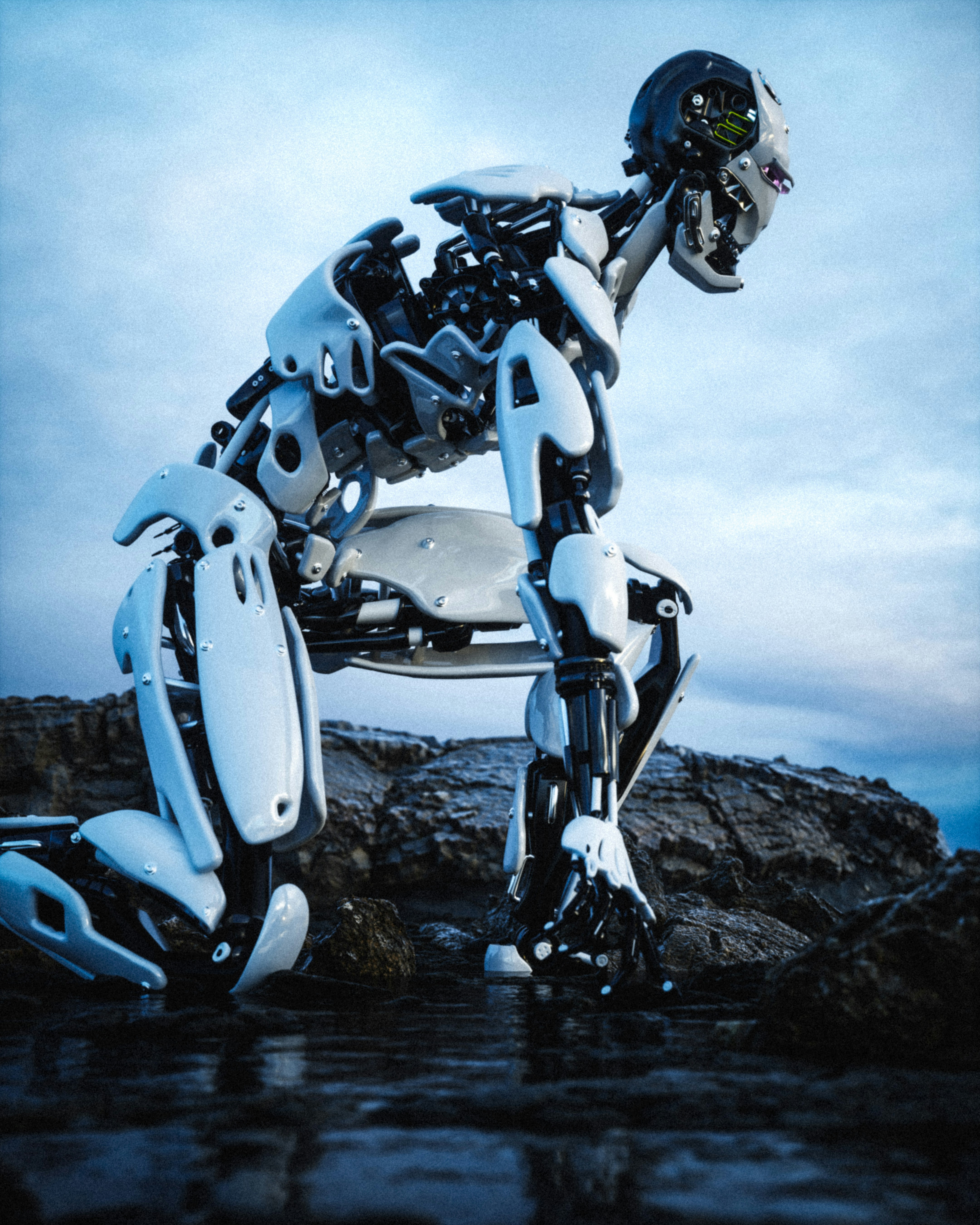

By Ayo E., Founder & Principal Consultant, Aiconic
Cambridge University researchers just crossed a threshold that seemed like science fiction: robots that can feel heat, pain, and pressure through artificial skin covering their entire surface. Using a low-cost gel material with 860,000 sensing pathways, these robots can detect a finger tap, recognize hot surfaces, feel damage from cuts, and even distinguish multiple contact points simultaneously. For B2B companies, this isn't just technological advancement—it's the foundation for fundamentally safer and more intuitive human-robot collaboration.
The breakthrough eliminates the complexity and cost of traditional robotic sensing. Instead of embedding different sensors for pressure, temperature, and damage detection, this single material handles everything. From just 32 electrodes at the "wrist," the system processes 1.7 million data points across the entire hand surface, using machine learning to distinguish between different types of contact in real-time.
For industrial applications, robots that can feel pain represent a paradigm shift in workplace safety. Manufacturing robots that sense when they're damaging themselves or their environment can prevent costly accidents and equipment failures. Logistics robots that feel pressure and heat can handle delicate or temperature-sensitive materials with human-like precision. Customer service robots that detect touch can provide more natural, reassuring interactions.
The implications extend beyond individual robot capabilities. When robots can feel and respond to their environment like humans do, the barriers between human and automated workspaces dissolve, enabling true collaborative operations where humans and machines work side-by-side safely and intuitively.
Subtitle: From Blind Automation to Sensory Intelligence: The New Era of Human-Robot Collaboration
This sensing breakthrough represents more than technological sophistication—it enables fundamentally new business models and operational capabilities. While competitors deploy traditional robots that require careful programming and safety barriers, companies leveraging touch-sensitive robots can operate with unprecedented flexibility and safety margins.
At Aiconic, we're seeing clients across industries struggle with the rigidity of current automation. Assembly line robots that can't detect improper part placement cause quality failures. Warehouse robots that can't sense package damage create customer service nightmares. Service robots that can't respond to human touch provide cold, mechanical interactions that hurt brand perception.
Touch-sensitive robots solve these problems while opening new possibilities. Robots that feel resistance can adapt their grip strength for different materials. Machines that detect temperature changes can prevent overheating and component damage. Systems that sense multiple contact points can coordinate complex multi-handed tasks autonomously.
Early adopters are already identifying applications where touch sensitivity provides decisive advantages: precision manufacturing requiring delicate handling, customer-facing operations where natural interaction matters, and high-stakes environments where sensing damage could prevent catastrophic failures. Because when your robots can feel their way through complex tasks while competitors' robots operate blindly, you're not just improving efficiency—you're redefining what's possible in human-machine collaboration.
Subtitle: Building Tomorrow's Workforce Through Sensory-Enhanced Automation Today